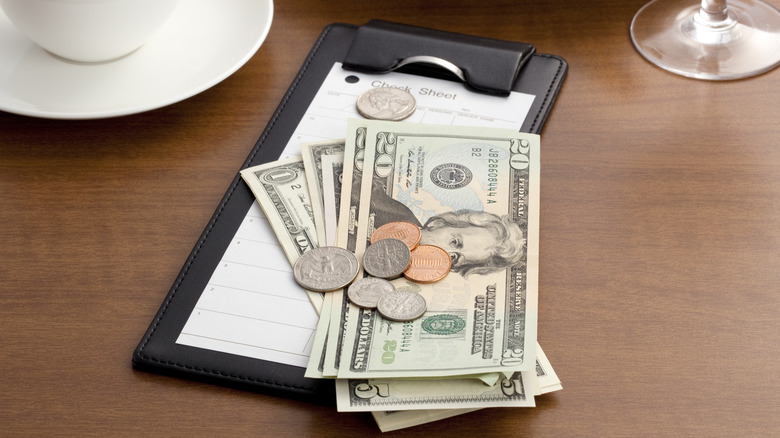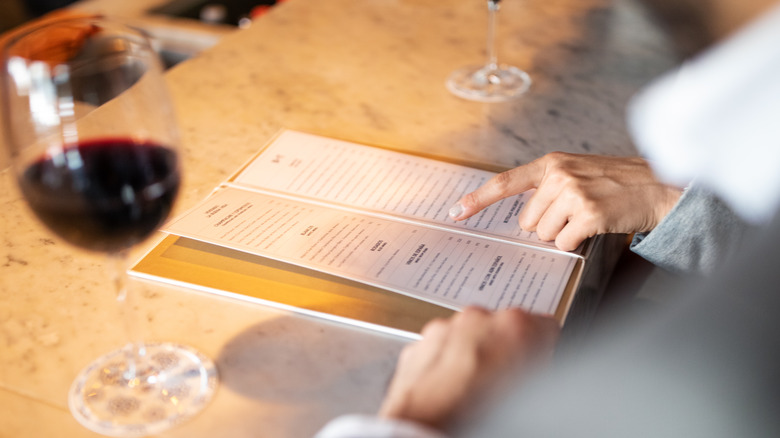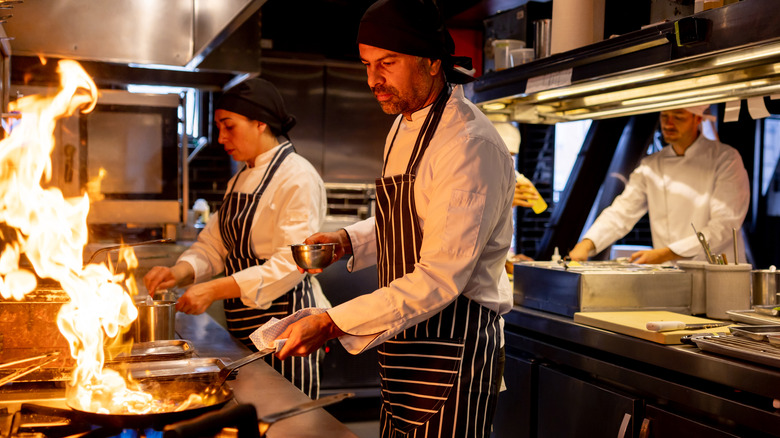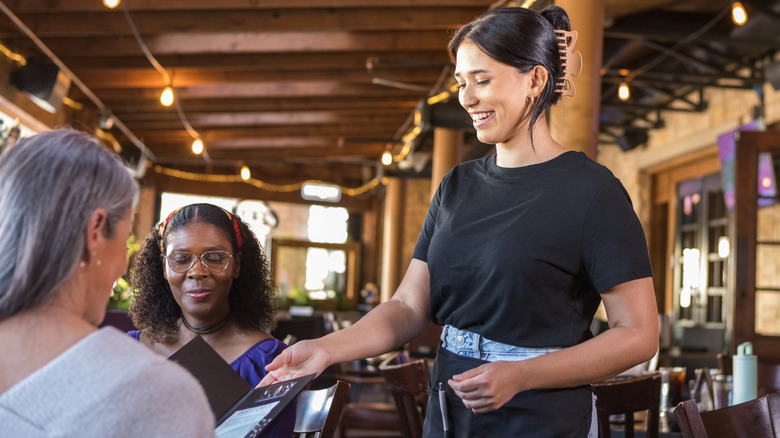The Must-Know Etiquette For Tipping On Top Of A Restaurant's Service Fee
Everyone knows by now (or at least, everyone should know by now) to tip servers 20% of the total bill. If that's not something a customer is prepared to do, they really should consider not going out to eat. That's because in much of the United States, the bulk of a server's income comes from tips.
What a server is paid varies widely by state, but the lowest hourly wage a server can make is $2.13 per hour. However, restaurants are required to compensate for the difference if the employee does not meet the state's general minimum wage with tips. In states including Texas, Pennsylvania, Wisconsin, Tennessee, and many more, a server can make as little as $7.25 per hour. States on the other end of the spectrum, including Washington ($15.74), Oregon ($13.50), California ($15.50), and Alaska ($10.85), require tipped employees to be paid the state minimum wage before tips.
If that variability isn't confusing enough, many restaurants are adding an additional percentage fee under the name of a health care fee, dine-in fee, equitable compensation fee, or broadly, a service charge. A service charge doesn't go directly to the server, but rather to the restaurant first. A service fee of any kind can be allocated to anything from paid sick leave to covering the restaurant's credit card fees. It is still the responsibility of the guest to tip a server appropriately.
Service fees are instituted to help cover costs
For many restaurants, adding a service fee is a way to offset the rising cost of doing business. Increased food costs, labor shortages, and inflation all make running a restaurant more expensive. Rather than raising menu prices, which may discourage guests from walking in the door at all, a service charge can be a more digestible way to cover those costs.
Restaurants charge at least a 200% markup on the wholesale cost of ingredients, but that markup has to cover "cost of labor, goods sold, marketing and advertising, real estate occupancy, maintenance and repairs, insurance and daily administrative costs," explains GoBankingRates, making profit margins for restaurants notoriously slim.
Instead, some restaurants have no-tipping policies and note that they are tip-free or tip-included, which means that they are covering labor, cost of goods, and operating expenses as well as an 18-20% tip all in the price you see on the menu. This allows for more stability for restaurants and their employees. In these cases as well as when there is an auto-gratuity, it is not obligatory to tip. (Still, tipping an additional percentage for outstanding service is always appreciated.)
What else can a service fee cover?
Often, service fees go towards giving service industry employees well-deserved benefits that they would typically have with other employers, "especially high stress [jobs] that require tremendous skill set and a ton of hard work like anyone in the restaurant business," said chef Andrew Zimmern in an April YouTube video discussing the new norms around tipping. Benefits can include paid sick leave, paid time off, parental leave, subsidized healthcare, professional development opportunities, and profit-sharing initiatives.
The fees can also go towards leveling the pay gap between front and back of house workers. Zimmern goes on to say, "I truly believe the success of a good restaurant depends on everyone being on the same team." This is challenging when, historically, there's been a significant pay gap between front-of-house workers, including servers, bartenders, food runners, and sommeliers, and back-of-house workers, including line cooks, chefs, and dishwashers.
Clarity is key
Ideally, the service fee will specify where that money is going. This clarity allows for guests to feel confident about what they are paying for. On the part of the restaurant, transparency helps ensure accountability. For example, Lenoir in Austin, Texas has a note at the bottom of the menus and printed on each check saying that a "3% employee wellness fee will be added to each ticket to help ensure paid sick leave and employee healthcare."
It is also important to note that a service fee on a takeout order is not a tip. Remember, someone had to take your order over the phone or through an online system. An employee cooked and packaged your food. They made sure that special requests were honored, extra sauces made it into the bag, and that the food was as fresh as possible. You didn't have to cook or clean. This is a service, and in general, a 15% tip is appropriate.
If when dining out or picking up a takeout order there is ever any confusion about fees or automatic gratuity, it's always better to ask for clarification rather than assume that a tip is included. While the tipping system is deeply flawed and represents a racist and sexist relic of America's dark past, it is the system that prevails today. Buying food from a restaurant is a privilege, and tipping well, even when there is a service fee of some kind, is crucial.




